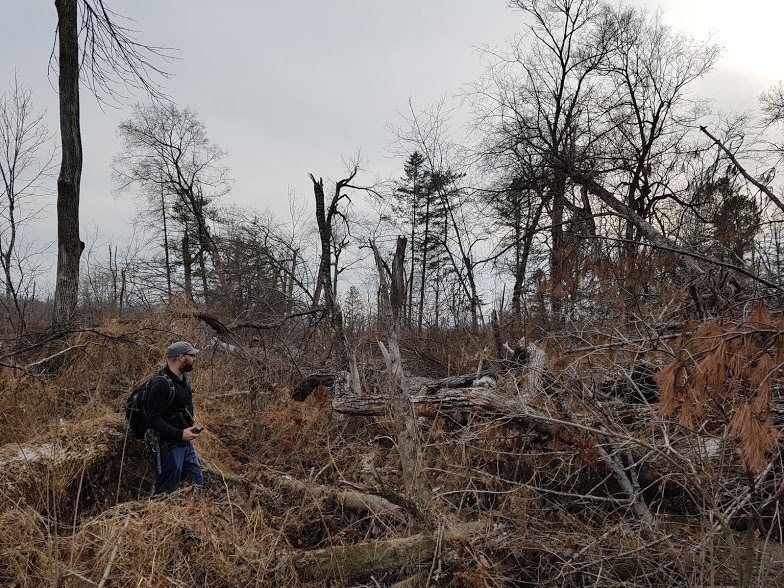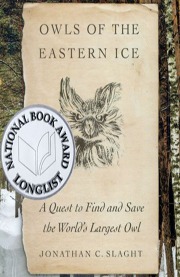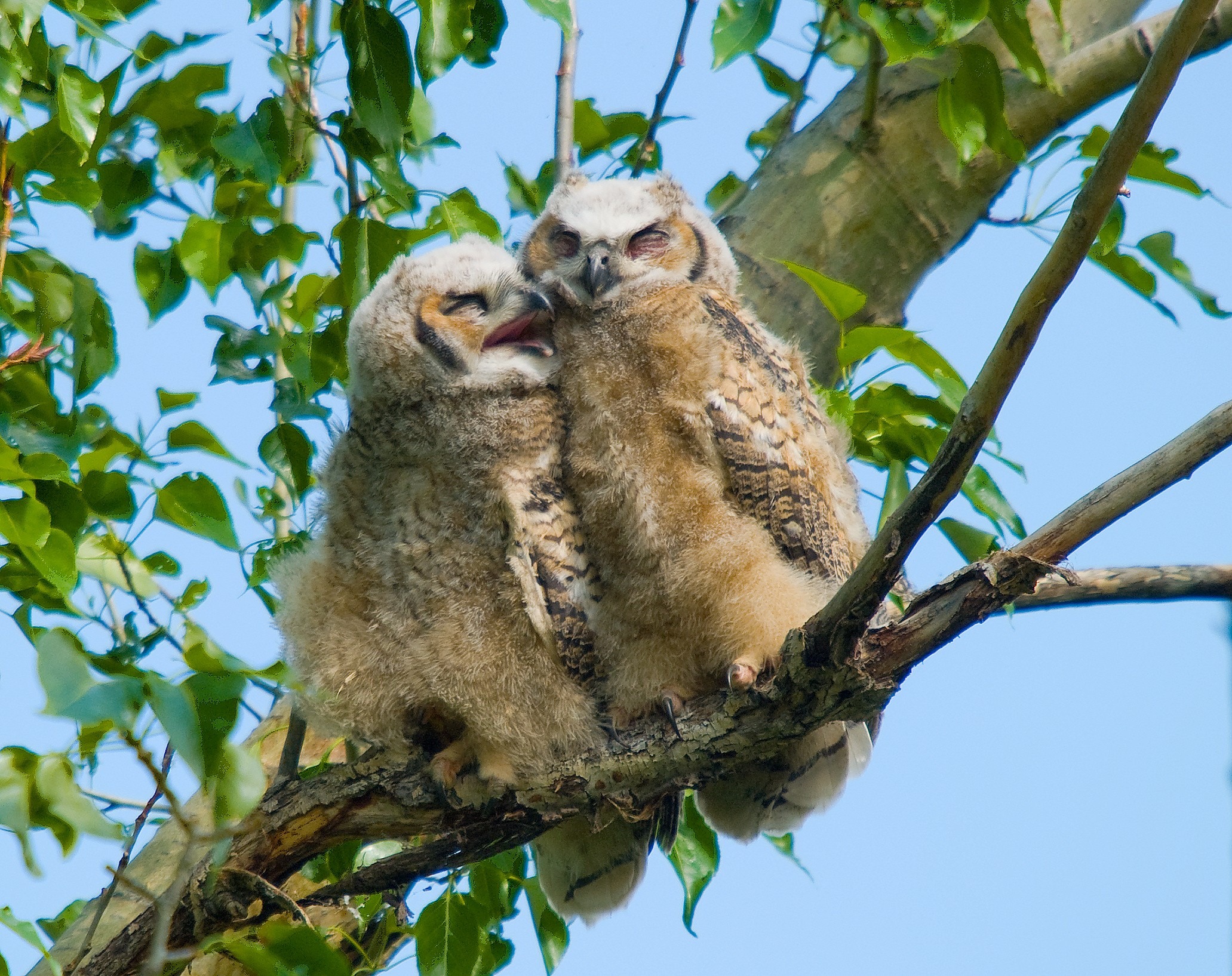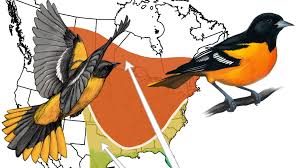Owls of the Eastern Ice Program: Follow-up and Link Instructions
Dr. Jonathan Slaght, the Minnesota author who recently published the Times Nature Book of the Year, Owls of the Eastern Ice, followed up on the tales of his adventure with this photo of him standing in typhoon damage to owl habitat. In the February MRVAC program, Slaght took us on his adventure – part of his Ph.D. dissertation fieldwork – into the Siberian winter to find, study, and hopefully save the world’s largest and most elusive owl. Typhoon Lionrock, mentioned at the end of his owl book, devastated large swaths of fish owl habitat in 2016. Fish owls must have large trees with cavities for nesting. In 2018, Slaght went with Rada Surmach to try to find the nest tree of the pair that lives in that area. The old nest tree had been knocked down and eventually they did find the owls' new nest tree. Surmach's photo show some of the devastation that spread over the whole river valley home to the nesting pair. Because of media ownership issues, we're not able to post a link to the recording on MRVAC.org. However, if you're interested in seeing the recording, send a message with a request for the link to Steve Weston, sweston2@comcast.net.
February Program Link: Owls of the Eastern Ice with Dr. Jonathan Slaght
Join MRVAC members and guests Thursday, Feb. 25 at 7:30 p.m. CST to hear Dr. Jonathan Slaght (rhymes with “cat”), the Minnesota author who recently published the Times Nature Book of the Year, Owls of the Eastern Ice. Dr. Slaght will take us on his adventure – part of his Ph.D. dissertation fieldwork – into the Siberian winter to find, study, and hopefully save the world’s largest and most elusive owl.
The book is rich in details about the dense forests of the Russian Far east – Amur tigers, frozen rivers, radioactive hot springs – and the Blakiston’s Fish Owl, a subgroup of eagle owls that specialize in hunting in riparian areas, including grabbing fish from holes in the river ice. Dr. Slaght is a talented writer who profiles the colorful characters – hermits and fellow fieldworkers alike. He provides details birders find fascinating, including how to trap a 10-pound nocturnal raptor for study. He is a wildlife biologist and author working for the Wildlife Conservation Society as its Russia & Northeast Asia Coordinator.
Want a teaser? Check this out: How Big is a Fish Owl? ("Owls of the Eastern Ice" book teaser) - YouTube
Kaufman January MRVAC program recording now available
Kenn Kaufman's Jan. 28 program on the "Secret Superheroes of Birding" was recorded and is now available. Click on the link below.
January 28 meeting: Kenn Kaufman, "Secret Superheroes"
Author, guide and birding expert Kenn Kauffman will be the speaker at MRVAC’s January program – and you’ll find out about the “secret superheroes” of birding Thursday, Jan. 28 at 7:30 p.m.
When we look at how birding has developed in North America, some famous names stand out—names like John James Audubon or Roger Tory Peterson. And it’s true that those people had a big impact on how we go birding today. But they’re not the only ones. Kenn Kaufman has been researching the history of birding, ornithology and bird conservation, and found that some of the most important, lasting influences came from people who didn’t necessarily become famous as a result. In this program he’ll talk about some of these amazing individuals, his “secret superheroes” of birding.
Join the meeting from your computer, table or smartphone using this link:
https://global.gotomeeting.com/join/776411077
You can also dial in using your phone.
United States: +1 (646) 749-3112
Access Code: 776-411-077
Note: This is not a Zoom meeting, but a GoToMeeting. The meeting size limitation is now 250. New to GoToMeeting? You will need to download the software. Get the app now to be ready when the meeting starts. You can do it by clicking on the link, or by going to http://www.gotomeeting.com earlier.
Give to the Max and help MRVAC
By Bob Williams
This has been a difficult year for everyone. It has also been difficult for MRVAC to achieve some of its financial goals for the year that help us with birding and other conservation grants.
We are not able, for instance, to have our annual holiday auction. We are having a special fundraising event in conjunction with Give to the Max Day on Nov. 19. Our board members have pledged $1,325 dollars as a matching grant for this event. We are asking all our members and other friends to donate so we can make up for the lost income that we usually get from the holiday auction. You can go to our page on the GiveMN.org website here (https://www.givemn.org/organization/Minnesota-River-Valley-Audubon-Chapter) and make a donation using your credit card. Your donation also gives us a chance to win a bonus from GiveMN itself.
There are photographs of some of the events that we have helped to support on our Give to the Max Day web page. We are a 501(c)3 corporation so your donations are tax deductible. If you have any questions, feel free to contact me at drbop6789@gmail.com. Thank you for your consideration. Stay safe and healthy.
Laura Erickson's October Zoom Talk Now Available
Laura Erickson’s Zoom talk featuring her new book, “The Love Lives of Birds: Courting and Mating Rituals,” was so popular in our October 26 meeting -- we had more than 100 people from all over the U.S. attending on Zoom -- that we've posted a link for those who couldn't make the program.
Click here
https://drive.google.com/file/d/1sd1rFX0kOGeNkVhidS-LfeTXHRr30vBp/view?usp=sharing_eil&ts=5f9971e6
to view the program. A hint: After you start the recording, move the cursor at the bottom ahead to the one-minute mark, which is where the program begins.
Zoom link to November's Stan Tekiela bird migration talk recording no longer available
MRVAC monthly programs return -- on Zoom!
Yes, it’s virtual, but we’ll be coming together once again on the fourth Thursday of each month at 7 p.m. on Zoom. Everyone is welcome to attend these virtual talks, but pre-registration will be required. Stay tuned for more details to come via email and on the MRVAC website over the next few days.
MRVAC board member Lee Ann Landstrom will tell us about the unique landscapes, wildlife and birds of in “The Pantanal Region of Brazil” Thursday, Sept. 24 at 7 p.m. on Zoom. As Africa does, the region has savannah grasslands – but they’re seasonally flooded ranches! The “big five” animals are jaguars, giant river otters, maned wolves, tapirs and giant anteater. She’ll show us unique landscapes, wildlife and birds of this lesser-known wildlife haven. Lee Ann Landstrom is a retired nature center director and international traveler.
October’s program will be Laura Erickson’s “The Love Lives of Birds: Courting and Mating Rituals.”
MRVAC needs your help!
MRVAC needs a new membership chair. Here’s an easy opportunity to contribute!
If you know or can learn Microsoft Office – or another similar software suite – and have an hour or so a week, you’re the ideal volunteer. The membership chair maintains accurate membership records, sends renewal and new- and renewing member notices, responds to inquiries, helps keep the Trumpeter distribution list updated, and works with the board of directors on member recruitment and retention.
A bird hit my window! What can I do?
by Lee Ann Landstrom, MRVAC Environmental Action and Education Chair
Best estimates are that between 365 million and one billion birds annually in the United States suffer strikes against windows and buildings. Birds do not see or understand glass, reflections, or transparency. If they see a reflection of trees, bushes – or even sky – they keep flying and smash into the glass. If the birds don’t die right away they often die after flying away.
What’s a homeowner to do? Disrupt the reflection. Here are some tactics.
I. Use window screens, whether part of the window system or added as an outer suspended layer. Interior blinds may be visible from the outside if the lighting is just right, but isn’t necessarily visible to birds. The Bird Screen Company sells hanging screen systems that are mounted outside your windows. See it at https://birdscreen.com/index.php. Easy Up Shades are made for solar shading, come in multiple colors and are mounted by suction cups. See them at https://easyupshade.com/.
II. Hang things on the outside of the windows. Ropes, string, or ribbon close to the glass work. You can attach these to your window frame four inches apart or hang a rod (curtain-rod style) from which the ropes hang. Most people attach the ropes at the bottom, so they are not stationary and don’t flap around. Vertical ropes must be no more than four inches apart or horizontal ropes, two inches apart – commonly called the 2”x 4” rule. Small birds are agile flyers and will fly into narrow spaces. Experiments have shown that four inches or narrower gaps will stop most birds from flying through the perceived space.
Motion scares birds away. Some folks suspend lines of old CDs or DVDs to add an additional shiny deterrent. You can even suspend pie pans, Christmas decorations, aluminum foil strips, or flapping strips of plastic bags. Mylar balloons are shiny and flap around. (Don’t use helium, in case the balloon gets loose, flies far away and becomes a wildlife hazard.) You can suspend a branch across a large window to break up the reflection.
If you don’t want to make your own hanging ropes system, there are commercial ‘hanging curtains’ products available for purchase: Bird Crash Preventer is a monofilament fishing line system http://stores.santarosanational.com/ or Acopian BirdSavers’ “Zen Curtains” https://www.birdsavers.com/. Another option is to stretch crop netting across the window. This is the most effective way to prevent bird strikes and deaths, albeit a bit unsightly. Birds hit the netting and bounce off. PolyNet comes in various lengths https://www.nixalite.com/product/pollynet-premium-bird-netting. Woodpecker Netting is a three-quarter-inch mesh. See it at https://www.absolutebirdcontrol.com/products/bird-netting.
III. Treat the outside glass surface. Remember, putting things on the inside of the glass pane doesn’t disrupt the outside reflection. Temporary fixes can be fabricated from strips (one-eighth to one-half inch wide) of rainproof tempera paint, masking tape, rubbing lines of hard bar soap, even your own patterns made with florescent yellow highlighter markers.
More permanent treatments are commercial semi-transparent tape, U-V appliques (which come in various shapes) or vinyl decals that look like etched glass for an artistic flair.
Tape: ABC bird tape comes in three-quarter inch or three inch widths. See https://www.collidescape.org/online-store/Translucent-blue-frosted-tape-American-Bird-p104381813. CollidEscape sells tapes in several styles. See https://www.collidescape.org/tapes.
Prefabricated decals (must be spaced in the 2”x 4” rule). Bird's Eye View Decals, which uses imbedded UV light, is placed on the inside of the window. See https://abirdseyeview.com/. All Window Dressing, Etc. has dozens of small to large, even door, decals. See https://windowdressingetc.com/. Window Alert decals reflect UV sunlight and come in several patterns. See https://windowalert.com/. Whispering Windows Anti-Collision Decals are white static clings in a half-dozen designs. See http://www.wpines.com/. The classic method of a hawk or owl silhouette is not effective. First, one silhouette in a large window does not address the four-inch rule. Second, birds tend to figure out that the silhouette is not real, or at the very least they acclimate to it. Often, folks stick these silhouettes on the inside of the glass, which doesn’t stop the reflection.
Films come in a variety of styles from many manufacturers. CollidEscape has several products; its original product looks ‘solid’ from the outside but thousands of small holes allow light in. See https://www.collidescape.org/. Solyx® Bird-Safety Window Films has several options at https://www.decorativefilm.com/specialty-bird-safety. Feather Friendly® DIY is clear tape with little squares at appropriate distance. See https://www.conveniencegroup.com/featherfriendly/feather-friendly/.
IV. Other tips.
- If birds keep hitting your windows from bird feeders, move the feeder closer to your window or house. If they are scared off, they don’t have enough distance to build momentum and really hurt themselves. Recommended distance is 18 inches or closer.
- Close curtains and blinds to break up the illusion of a clear passage or reflection, although time of day and amount of sunlight affect interior visibility.
- If you have large plants close to a window, move them farther away. Birds might see these plants as a place to perch or hide.
V. Resources:
American Bird Conservancy at https://abcbirds.org/program/glass-collisions/ has great information for homeowners and architects, air tunnel tested and recommended products, and an extensive FAQ at https://abcbirds.org/blog/truth-about-birds-and-glass-collisions. Its Bird Collison Program tested various materials https://abcbirds.org/get-involved/bird-smart-glass/
Bird Watching magazine has several articles and reviews at https://www.birdwatchingdaily.com/gear/preventing-bird-window-collisions/. Here’s a good summary article https://www.birdwatchingdaily.com/gear/preventing-bird-window-collisions/15-products-prevent-birds-hitting-windows/. Here's the printable version: https://cdn.birdwatchingdaily.com/2013/09/BW0413_WindowCollisions_CopyrightedR1.pdf.
There’s more information about building design and different types of treated glass. Check out the American Bird Conservancy website above. To see two different styles of bird-safe glass, visit the brand new Westwood Hills Nature Center, 8300 W. Franklin Ave., in St. Louis Park. The cover photo is a view from the outside: the lower level of glass is treated Ornilux, one of the least-visible products currently on the market that provides some significant bird deterrence via its ‘invisible’ grid of UV lines, while the upper layers are fritted glass that demonstrated the 2”x 4” rule.

